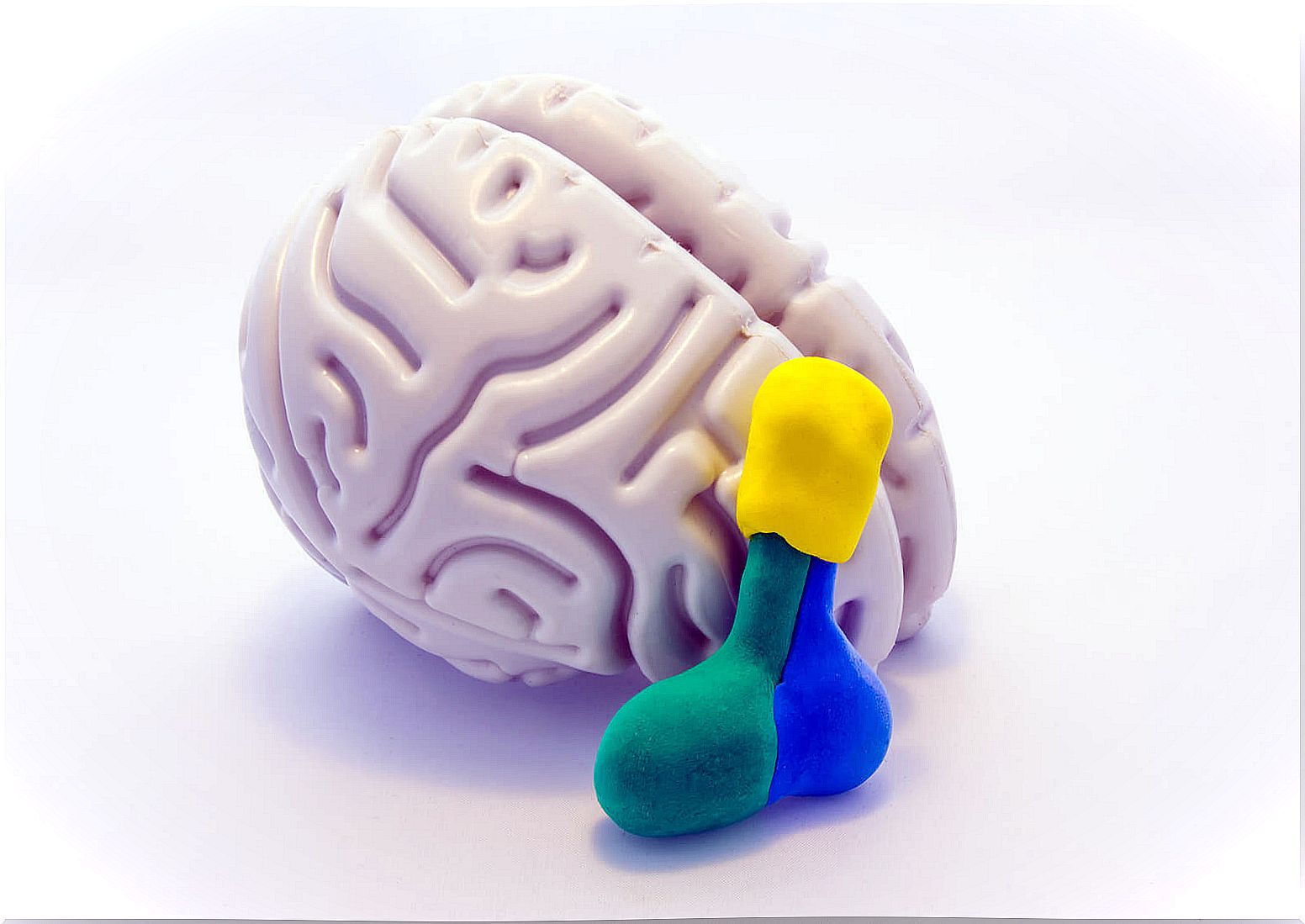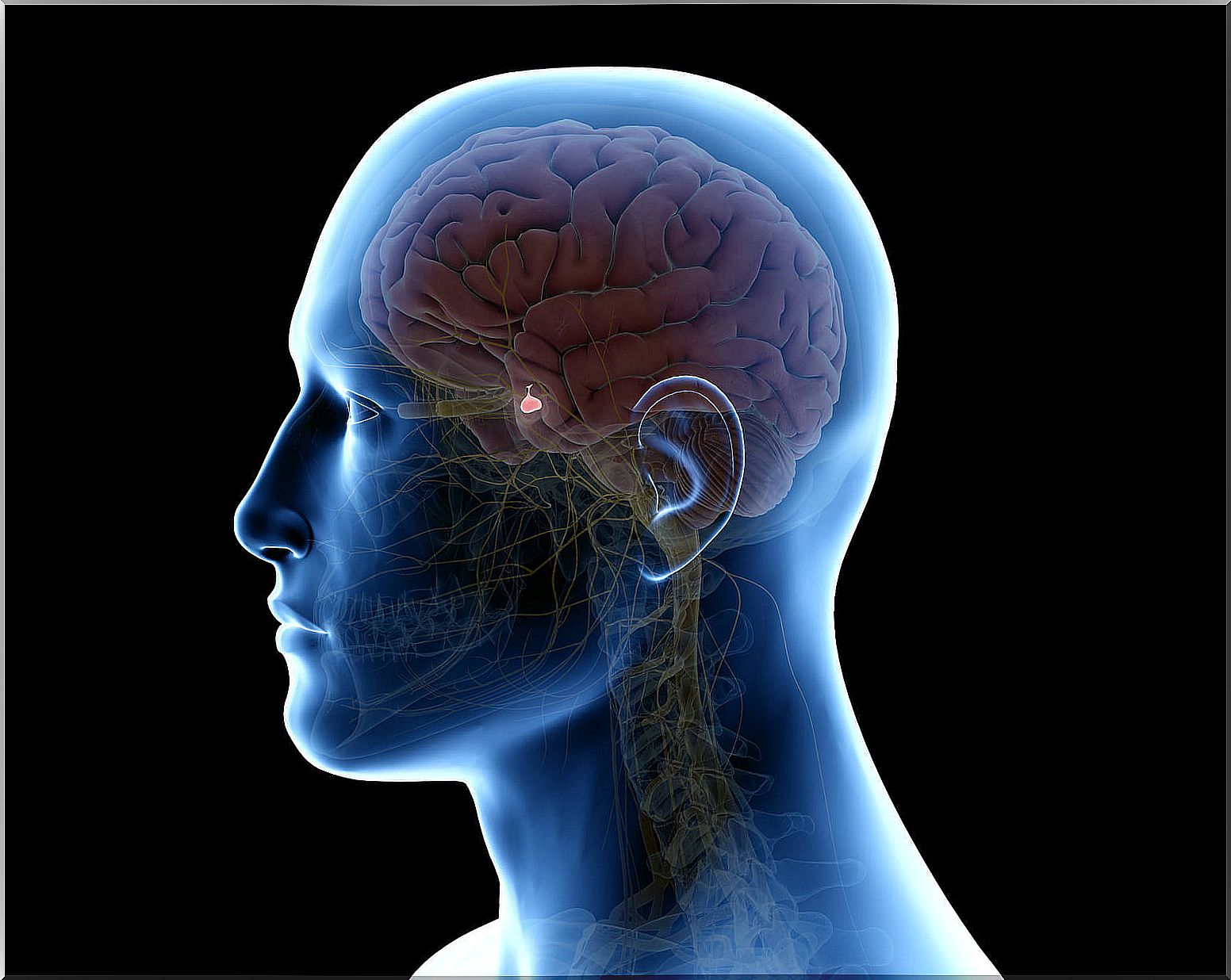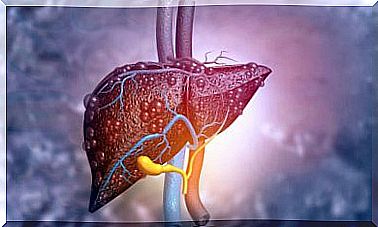Pituitary Gland Diseases
Despite its small size, the pituitary gland plays an essential endocrine function for the proper functioning of the body. Among the hormones that depend on this gland we find oxytocin and thyrotropin.

Hypophysis, master or pituitary gland, these are the names by which one of the most important endocrine glands in the entire body is known, whose main function is to regulate body homeostasis, in addition to other functions related to the endocrine system.
The pituitary gland is not only important, but complex. It seems incredible given its small size (10 x 13 x 6 millimeters), and its weight (0.5 grams) as this thesis indicates. It is located at the base of the skull, where two bones known as the sella turcica and the sphenoid are responsible for protecting it. It is also connected to the hypothalamus through the pituitary stalk.
Today we will discover throughout this article some diseases that are associated with this part of the body.
Structure of the pituitary gland

Before commenting on the different diseases that are associated with the pituitary gland, let’s see what parts it is made of.
- Neurohypophysis (posterior lobe): its origin and function are different from the rest of the pituitary. The main function of the posterior lobe is hormonal storage, especially antidiuretic hormone (ADH) and oxytocin.
- Middle pituitary : his work focuses on the skin tissues of the body and induces the secretion of melanotropins, polypeptides responsible for the stimulation of melanocytes. In this way, the median pituitary causes the synthesis of melanin in the skin.
- Adenohypophysis (anterior lobe): it is considered the most relevant part of the pituitary gland, taking into account its high hormonal activity. It is responsible for the synthesis and release of six different hormones vital for the proper functioning of the entire body, among which growth hormone (GH), prolactin (PRL), thyrotropin (TSH) and luteinizing hormone (LH) stand out. .
Diseases related to the pituitary gland
As we have mentioned previously, the pituitary gland is necessary for the proper functioning of the entire body as it is responsible for the synthesis and release of numerous hormones that participate in vital processes.
If in any case the gland fails, it can cause a multitude of damages, which will vary depending on the hormone that is affected.
Acromegaly
It is an endocrine disease, caused by an excess production of growth hormone (GH) that can affect the nose, feet or hands that are too large.

Although it is a complex disease, health professionals only diagnose it 10 to 15 years after the first symptoms appear.
For the correct diagnosis of this disease, the doctor must take into account the clinical history of the patient in addition to evaluating the morphological characteristics of the gland using magnetic resonance techniques.
Giantism
This other disease of the pituitary gland is linked to the previous one. However, gigantism manifests itself only in childhood, just before the closure of the bone plates that determine growth occurs.
The excessive secretion of this hormone causes an abnormal and excessive development of the body to occur quite striking.
Diabetes insipidus

It occurs due to the absolute or partial deficit of vasopressin or antidiuretic hormone, which is responsible for regulating the excretion of water at the level of the kidneys. This condition is related to the pituitary gland, especially the posterior pituitary, where the aforementioned hormone is stored.
Diabetes insipidus is divided into two types: central and nephrogenic. The first is the most common in humans.
Sheehan syndrome
It has a unique and quite particular characteristic and that is that it only affects women because it is caused by postpartum hemorrhage. It affects the hormonal processes of pregnancy causing lactation and progestational activity to decrease.
Sheehan’s syndrome could be summarized as a heart attack that occurs in the pituitary gland and leads to hypopituitarism, a disease that affects the levels of adrenocorticotropic hormone.
We hope that after reading this article you have acquired more knowledge about the pituitary gland and have discovered all those diseases that some people can suffer when it does not work in the correct way.









